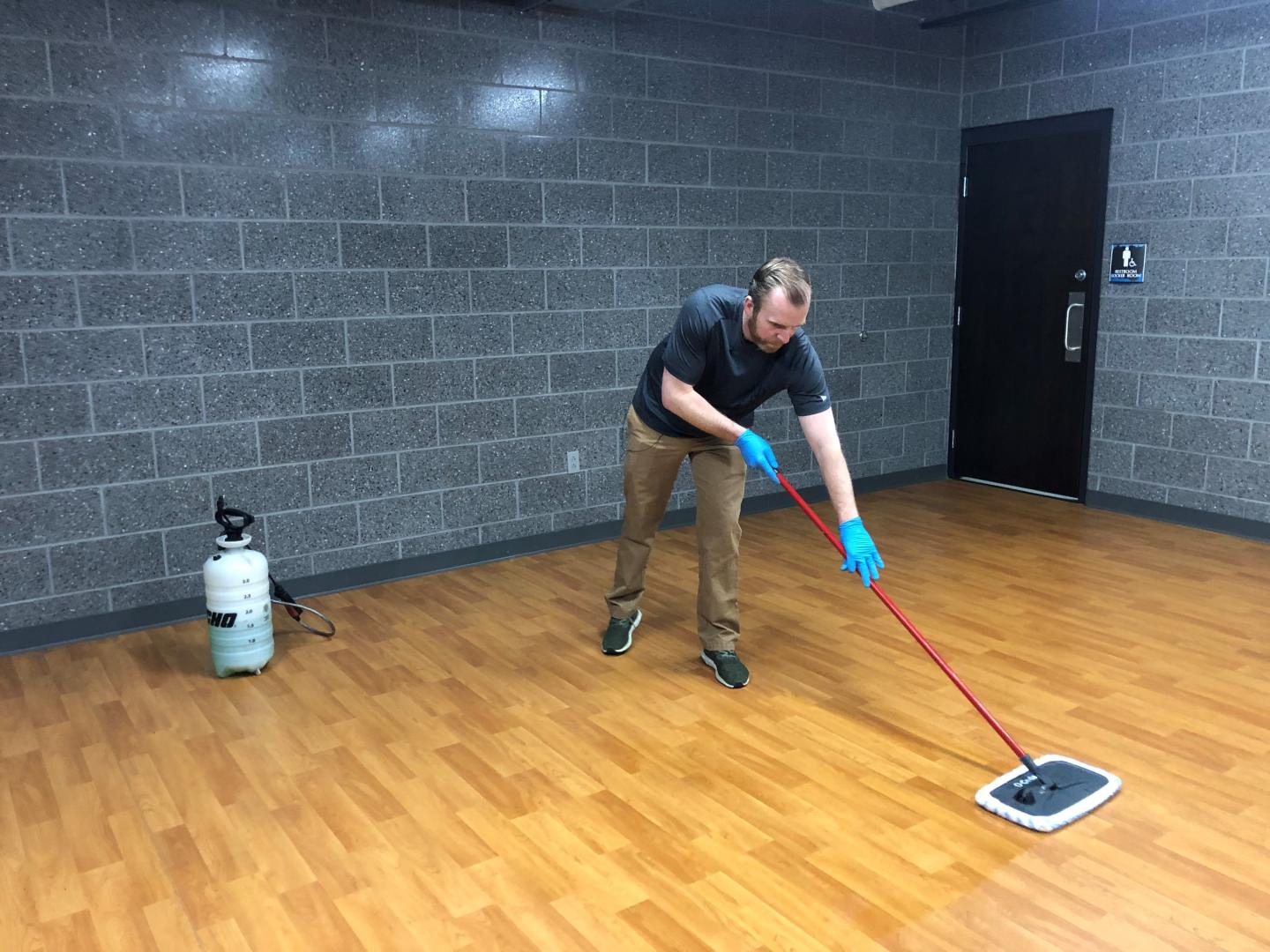
Post Pandemic: What You Need to Know to Maintain Your Surfaces & Create an Ongoing Maintenance Plan
AUTHOR:
Bo Barber
Executive Vice President of Sales & Marketing, Ecore
In the wake of COVID-19, facility owners must now ensure that employees are following proper floor maintenance, cleaning, and disinfection routines, in addition to following social distancing guidelines. This is especially true in healthcare and fitness applications. As a result, Ecore recommends that every facility educate themselves on how to maintain their floors and develop an ongoing maintenance plan. A facility’s ongoing floor maintenance plan should focus on three critical areas: maintenance, disinfection, and reorganization.
These three areas are where the floor can play a key role in creating confidence for customers and employees. Shiny, solid, cool, seamless surfaces are all synonymous with ¨clean¨ and will now drive design and maintenance protocols.
To help ensure your facility is including the right protocols in its ongoing floor maintenance plan, you should focus on three areas:
MAINTENANCE
Maintenance simply means the tasks you take to keep a floor clean. Consumers correlate safe with clean. Here we are really focusing on prevention – keeping dirt from coming in and moving around a facility to help a space stay clean. Prevention can be addressed in three ways:
ENTRY SYSTEMS
Stopping dirt at the door is the most overlooked tool in the battle to keep floors clean. Most dirt is tracked into a facility on the soles of shoes. While buildings can create some dust through the HVAC system, and open windows and doors allow airborne contaminants to enter, the soles of customers’ shoes are the primary vehicle of concern. Most facilities try to address this with some kind of entry mat, but most fall short in creating the proper barrier to make a real difference.
TRANSITION MATS
The next level of prevention is to prevent dirt from moving around your facility. We recommend transition mats at key areas between different surfaces or access points. Examples include access areas to any traditional hardwood or multipurpose courts surfaces. Mats in these areas not only stop the movement of dirt but also create a safer environment, since clean shoes and court surfaces typically help prevent slips and falls. Other examples of good places for transition mats include the entrances to locker rooms, training-therapy rooms, restrooms, and any food service areas. All these places are scrutinized by patrons for cleanliness, reinforcing the importance of prevention.
CLEANING
Ecore has developed Maintenance Guidelines that cover all the specific applications within sports, fitness, and recreation facilities, based on different flooring types. Floors must be cleaned before they can be disinfected.
The key concepts of cleaning can be broken down into three areas: chemistry, agitation, and extraction. There can be different levels of effort applied across all three to achieve the desired outcome. To achieve social distancing, you may need to reconfigure your equipment layout. When you move equipment around, it will reveal uneven wear and soiling in high-traffic areas. The act of moving equipment is going to require some aggressive cleaning.
Disinfection
Disinfection is the process of cleaning something to destroy bacteria. When reviewing disinfection options, it is important to select a product, such as Enviro Care®, that meets the U.S. Environmental Protection Agency’s Emerging Viral Pathogen Guidance in response to COVID-19 and other viruses.
All facilities need to create safe spaces by making sure their floors are clean and disinfected! For more tips, we have a video series that goes over how to clean and disinfect surfaces.
Reorganization
The new normal may require more square footage per customer. A key question to ask is what can your facility do to maximize existing space to spread people out appropriately? While the use of simple tape or retail stickers is common, these items typically do not offer the right coefficient of friction for sports or fitness activities or facilities with high traffic. These stickers can also create a slip and fall hazard. Look for a flooring manufacturer that offers a range of floor graphics that can be as simple as a directional arrow or as complicated as a photographic image to help with directing people where to go, or the direction they should take inside your building. The key is a PUR coating on the floor surface that minimizes slips and falls.
Some suggestions for reorganization to maintain and promote social distancing requirements include:
A. Directional decals: Use of decals or inlaid graphics on the floor, directing people where to stand.
B. Way Finding: Use of decals or inlaid graphics on floor, directing people where to go and in what direction.
C. Repurposing Space: Consider repurposing existing rooms or utilizing outdoor space to create more room for social distancing.
For most facilities, the post-COVID standards for hygiene, cleanliness, and sanitation will be different than pre-COVID practices. If you have not done so already, develop an ongoing maintenance plan for your facility that focuses on these three critical areas: maintenance, disinfection, and reorganization. For more information and resources on how to do this, check out our readiness resources.



